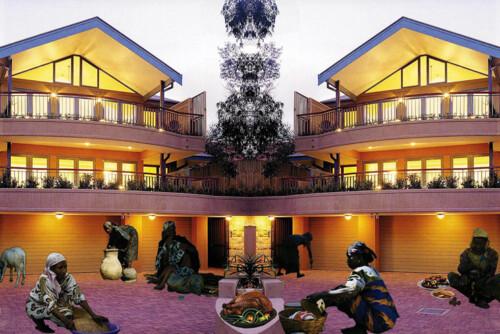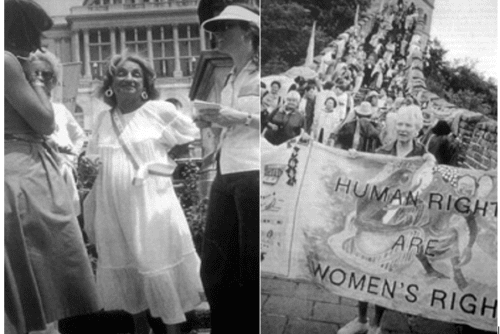“Get Tough” Doesn’t Deter Anti-Queer Violence
Richard Kim pointed out years ago in the pages of the Nation that there is no proactive “protection” in hate crime laws.1 These laws only kick in after the fact of violence. Yet supporters continue to tout the presumed deterrent value of enhanced penalties, a central feature of most hate crime laws, even though the pro-queer federal and state laws do not appear to deter much, if any, harassment and violence—thereby exposing a credibility gap between these assertions and reality.
In 2007, for instance, the National Coalition of Anti-Violence Programs (NCAVP), with over 30 local and state affiliates across the United States, reported a 24 percent increase in the number of people reporting incidents of anti-LGBTQ violence from those reporting in 2006. In 2007, total number of offenders also increased about 5 percent over numbers in 2006. Additionally, 2007 had the highest murder rate in the past ten years. Murders more than doubled, from 10 to 21. The NCAVP also noted a 61 percent increase in LGBT reports of sexual assaults.2 Whether these numbers document actual increases in violence or simply reflect increased reporting is not known. But since queer antiviolence activists and service providers all agree that much—perhaps even most—anti-LGBTQ harassment and violence is never reported for a variety of reasons, this is also a factor that should be taken into account in any argument that hate crime laws reduce or prevent violence.
The increases in harassment and violence—or at least in the reporting of these increases—are not happening only in locales that lack queer-inclusive hate crime laws. In 2007, according to the NCAVP, several of the most sizable increases in incidents occurred in locales with hate crime laws that included both sexual orientation and gender identity as protected categories: Minnesota (135 percent increase); Kansas City, Missouri (142 percent increase); and Pennsylvania (28 percent increase).3
Some spikes in violence are, according to the NCAVP and its affiliates, related to “highly visible political attacks on LGBT communities [that] reinforce the idea that it is acceptable to target LGBT persons with violence.” This is to say, one factor that helps produce more anti-queer violence comes from the entrenched anti-LGBTQ views and practices of established and “respectable” political, civic, and religious leaders and organizations.
An even more complicated relationship seems to exist between spikes of violence against queers—especially people of color, including immigrants—and the general political climate. According to the NCAVP, in the aftermath of September 11, 2001, attacks against Muslim, South Asian, and Arab queers in the United States surged. Moreover, a number of community-based LGBTQ programs—especially those serving youth, people of color (including immigrants), and violence survivors—reported post-9/11 surges in domestic violence, racist and anti-queer assaults, and racial profiling.4
All of this suggests that the diagnosis of “hate” expressed by individual “criminal extremists” is inadequate and cannot accurately account for anti-LGBTQ harassment, violence, and surges in incidents. The deeper problem has to do with the fact that racism, heterosexism, xenophobia, and economic violence are deeply embedded in the policies and practices of many public and private institutions, providing models for broken, unjust, and violent relationships between dominant and subordinate groups. Many mainstream policies and practices foster a politics of fear, resentment, enmity, and violence, and it is all but impossible to effectively use the criminal legal system to hold political, civic, corporate, and religious leaders and institutions responsible for promoting this breakdown for their own benefit. Hate crime laws—perhaps inadvertently—serve to distract us from these larger problems and provide us with no tools for organizing to address them.
Public awareness campaigns about the nature, extent, and unacceptability of anti-queer violence are essential, but they need not be harnessed to a demand for more “get tough” measures.
Sweet Dreams
How, then, do we begin to move toward ways of framing issues and making strategic choices that are not merely about punishing violence, but dismantling it in the community and within public and private institutions, replacing it over time with more healing, transformative visions of justice? How do we begin to envision justice as various forms of compassionate regard for the wholeness of both individuals and entire communities?
We begin by drawing on the experiences of others for inspiration. Nobody has the all of the “right” answers; we will have to create them, painstakingly, over time. Fortunately, there already are a growing number of groups working with imaginative persistence to reduce and organize resistance to multiple forms of racist, misogynist, and anti-queer violence while also exploring hopeful new ways of conceptualizing justice.
Nationally, they include Critical Resistance, which is working to end the prison-industrial complex by challenging the belief that more policing and incarceration create safer communities and INCITE! Women of Color Against Violence, a national activist organization of radical feminists of color advancing a movement to end violence against women of color and their communities through direct action, critical dialogue, and grassroots organizing. Both organizations produce useful resources for local organizing.
Local organizing offers extraordinary opportunities for developing anti-violence strategies appropriate to specific communities. San Francisco’s Community United Against Violence (CUAV), for example, the nation’s first LGBTQ anti-violence organization founded in the wake of the assassinations of Supervisor Harvey Milk and Mayor George Moscone, has expanded from a focus on community violence (hate violence, bullying) to intimate violence (child sexual abuse, incest and family abuse, intimate partner and dating violence, sexual violence) and state violence (law enforcement abuses; institutionalized discrimination; denial of human rights in such areas as housing, health care and employment, deportation, occupation, and military-related human rights violations). The organization distributes information not only addressing anti-queer violence, but also the needs of survivors of multiple forms of violence and those who may face encounters with law enforcement and Immigration Control and Enforcement (ICE).
In Chicago, Gender JUST, a multiracial, multiethnic, and multigenerational organization challenges heterosexism, sexism, gender binaries, and racism within a framework that places racial and economic justice at the forefront of its organizing. Emphasizing community alternatives to hate crime laws and zero-tolerance policies. Gender JUST’s Safe & Affirming Education initiative led a successful campaign in Chicago public schools (CPS) to identify issues standing in the way of safe and affirming education for all students, create a student grievance process based on principles of restorative justice, and expand the CPS’s antidiscrimination policy to include gender identity and expression. Gender JUST and its allies—including students, parents, teachers, and their allies—are now fighting for implementation of the grievance process and the nondiscrimination policy.
In New York City, the Audre Lorde Project’s long-term Safe Neighborhoods Campaign, “guided by the belief that strategies that increase the police presence and the criminalization of our communities do not create safety,”5 works with local residents and businesses to emphasize community accountability strategies that challenge both street and police violence. FIERCE, an organization devoted to building the leadership and power of LGTBQ youth of color in New York City, developed the Save Our Space Organizing Platform “to counter the displacement and criminalization of LGBTQ youth of color and homeless youth at the Christopher Street Pier and in Manhattan’s West Village”6 and to fight for the right to be present in public spaces that constitute part of the social infrastructure for these youth. Utilizing an imaginative array of tactics, FIERCE has fought to ensure that these youth have a meaningful voice in the new commercial development of the pier and the larger issue of community safety.
There will always be those who say it is impossible to imagine safety and justice without reliance on increased policing, harsher punishment, and more prisons. But these groups and others serve as beacons, giving us promising glimpses of the possibilities inherent in that bolder dream. Their vision, courage, and innovative determination deserve our long overdue and urgent attention.
- Richard Kim, “The Truth about Hate Crimes Laws,” The Nation, 12 July 1999. [↩]
- National Coalition of Anti-Violence Programs, Anti-Lesbian, Gay, Bisexual and Transgender Violence in 2007 (New York: National Coalition of Anti-Violence Programs, 2008) 1-2. [↩]
- Ibid. 1. It should also be noted that the following year, in 2008, the Pennsylvania Supreme Court struck down on procedural (not content) grounds amendments to state hate crime law that, in 2002, added sexual orientation, gender identity, and other categories. [↩]
- National Coalition of Anti-Violence Programs, Anti-Lesbian, Gay, Bisexual and Transgender Violence in 2002, 2003 Preliminary Edition (New York: National Coalition of Anti-Violence Programs, 2003) 4-5. See also American Friends Service Committee and National Youth Advocacy Coalition, Is Opposing the War an LGBT Issue? (Philadelphia: American Friends Service Committee and National Youth Advocacy Coalition, 2004). [↩]
- Audre Lorde Project website, “Community” page. (Accessed on January 26, 2012). [↩]
- FIERCE website, “Campaigns” page. (Accessed on January 26, 2012). [↩]




